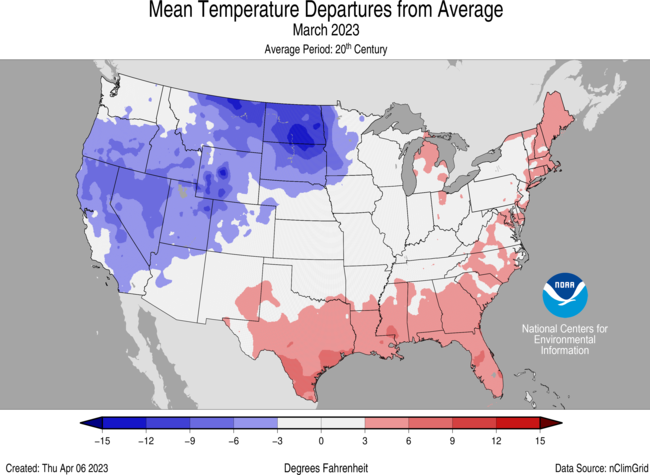The National Oceanic and Atmospheric Administration’s (NOAA) most recent National Monthly Climate Report confirms that March 2023 was both below normal in temperature, and above normal in precipitation, mainly in the form of snow in the western United States. As seen in the map above, most of the western United States was affected with colder than normal temperatures.
“The contiguous U.S. average temperature during March was 40.7°F, 0.8°F below average, ranking in the middle third of the record,” reports NOAA.
Not only was the average temperature colder, but NOAA also said daily high temperatures fell even further below the average:
The contiguous U.S. average maximum (daytime) temperature during March was 51.6°F, 1.4°F below the 20th century average, ranking in the coldest third of the record. Above-average maximum temperatures were observed from the southern Plains to Northeast, with below-average temperatures from the northern Plains to the West Coast. Florida ranked sixth warmest on record for daytime temperatures. California and Nevada each ranked third coldest while North Dakota ranked fifth, Oregon ranked seventh and Utah ranked eighth coldest March on record for daytime temperatures.
Daily minimum temperatures were also lower than normal for the month, according to NOAA:
The contiguous U.S. average minimum (nighttime) temperature during March was 29.7°F, 0.3°F below the 20th century average, ranking in the middle third of the historical record.
…
Temperatures were near- or below-normal from the central and northern Plains to the West Coast. Florida had its 10th-warmest March in the 129-year record. Conversely, Oregon ranked second coldest while North Dakota and Nevada ranked seventh and eighth coldest March on record for nighttime temperatures, respectively.


